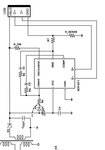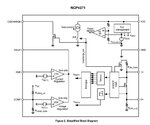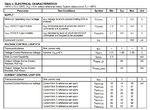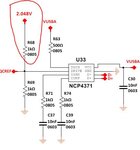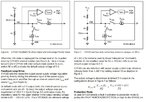mrinalmani
Advanced Member level 1
- Joined
- Oct 7, 2011
- Messages
- 463
- Helped
- 60
- Reputation
- 121
- Reaction score
- 58
- Trophy points
- 1,318
- Location
- Delhi, India
- Activity points
- 5,285
Hi!
I am using NCP4371 which is a flyback converter switcher IC that uses a optocoupler for feedback.
I need to use this IC for buck topology. The error in output voltage and current is indicated at the DRIVE pin of the IC.
The specification for voltage and current OTA is also mentioned. (Please refer to the images)
My doubts are:
(1) OTA gain is specified to be 1. Does this mean that the OTA will sink 1A current if the error (V_out - V_ref) = 1V? This is a large amount of current!
(2) Says minimum OTA sink current = 2mA. What can this possibly mean? Does this mean that this is the quiescent current at zero error?
Please help me decide an appropriate resistor value that when connected to the DRIVE pin will give a meaningful error value that can be fed to the ADC of a microcontroller.
(I have also attached my schematic... is this OK?)
Thank you
I am using NCP4371 which is a flyback converter switcher IC that uses a optocoupler for feedback.
I need to use this IC for buck topology. The error in output voltage and current is indicated at the DRIVE pin of the IC.
The specification for voltage and current OTA is also mentioned. (Please refer to the images)
My doubts are:
(1) OTA gain is specified to be 1. Does this mean that the OTA will sink 1A current if the error (V_out - V_ref) = 1V? This is a large amount of current!
(2) Says minimum OTA sink current = 2mA. What can this possibly mean? Does this mean that this is the quiescent current at zero error?
Please help me decide an appropriate resistor value that when connected to the DRIVE pin will give a meaningful error value that can be fed to the ADC of a microcontroller.
(I have also attached my schematic... is this OK?)
Thank you
